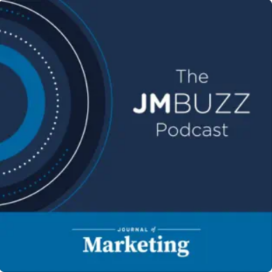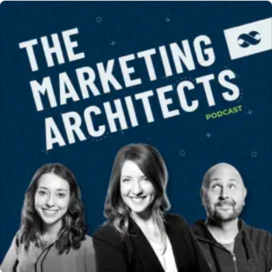New model helps to identify when users are likely to upgrade software products
Published: July 7, 2022 / Author: Courtney Ryan

Photo by Sean Do on Unsplash
Each year, the best-selling video game Call of Duty releases a new generation with upgraded features and new storylines. This isn’t news to anyone familiar with popular video games or other software products such as smartphones, as releasing new generations and models is thought to keep users engaged and ensure a competitive market share.
While most companies can expect customers to be on board with a certain frequency of upgrades, the average time between user upgrades has increased in recent years. In 2014, for example, U.S. consumers upgraded their smartphones every 23 months. Yet by 2018, the average consumer was holding onto their phone for an additional eight months. That time gap is predicted to only widen in the coming years. To better predict when users will opt to upgrade their products, a team of researchers set out to identify the factors that might reveal users’ intentions.

Xinxue (Shawn) Qu
“Perhaps in the first few generations, consumers are more excited about new features, but as time goes on, most of the users become less and less excited about the new and improved features,” said Xinxue (Shawn) Qu, an assistant professor of IT, Analytics, and Operations at the Mendoza College of Business at the University of Notre Dame. “We wanted to know why certain consumers are more willing to adopt new upgrades while others tend to wait a longer time. If you want to understand users’ willingness to adopt, you need to observe their previous usage pattern.”
Qu, an expert in technology adoption, data management and predictive analytics, and a team of researchers compiled their findings in the paper, “Predicting Time to Upgrade under Successive Product Generations: A Survival Model with Exponential-Decay Baseline Function,” for a forthcoming issue of Production and Operations Management. Qu’s co-authors include Aslan Lotfi of the Robins School of Business at University of Richmond, Dipak Jain of the China Europe International Business School and Zhengrui Jiang of the School of Business at Nanjing University.
The researchers focused on a popular sports video game that releases annual upgrades and boasts a particularly rich data set of more than 60,000 unique players tracked across multiple generations of the game series. They predicted that the most active players — those who started a larger number of game sessions, played more game modes, made more enhancement purchases and played the game more recently — would be more likely to upgrade to the newer generation. They were also interested in an increasingly common scenario, where online purchases made prior to the game’s release account for a significant portion of the sales of a new product generation.
“We realized that the existing theory cannot fully address the current phenomenon,” said Qu. “When Apple first releases a new iPhone, people wait in line wanting to get to the store at the launch date and buy the product as soon as they can. That’s totally different from the traditional theory, where it takes time for the market to respond to the introduction of new technology.”
This trend of waiting in line on launch day or upgrading online before the physical release leads to a huge sales spike in the days following a release and then a sharp decline in sales once the enthusiastic adopters have made their purchases. To help explain and predict consumers’ upgrade behaviors, the researchers proposed an exponential-decay proportional hazard model (Expo-Decay model) and tested it against existing other models.
“This model falls under a framework called survival analysis,” said Qu. “It’s accounting for all the factors that can predict the time before an event can happen. For instance, the dependent variable of our model is when the user is going to adopt a new generation of an item and then we can incorporate all the other factors, including usage and adoption behavior from previous generations.”
The researchers also launched three extensions to their model, the first of which captures unobserved factors that might have influenced user behavior. The second extension emphasizes more recent user patterns over all historical data to help understand time delays in adoption. The third extension updates the value of covariates as time progresses. Ultimately, though the first two extensions incorporated more nuanced variables, they did not outperform the Expo-Decay model. The third extension, however, outperformed the benchmark.
“Let’s say the product is released in September, all my observations should be from before September,” said Qu. “But if the user hasn’t made a purchase when it comes to November, and if you are still using the user’s data captured in September to make a prediction for November, the model becomes less accurate. So this is where the third extension is better.”
Certain findings were intuitive and confirmed what the researchers had hypothesized. Indeed, if a user upgraded earlier in previous generations, they are more willing to upgrade earlier for the focus generation as well. One finding, though, was rather surprising.
“Interestingly, we found that those specialized users who only use a few functions are more willing to upgrade,” said Qu. “This is possibly because those users only use a limited number of functions, so they are tired of exploring others, or they are already familiar with other features and they know they are not interested in those features. So they are waiting to see what will be new in the next generation. When a new feature is introduced, they will be the first in line to make the purchase.”
Qu said companies can benefit from this research to better predict sales since the model can incorporate features regarding user behavior and any factors that influence their purchasing decisions. Therefore, companies can personalize their marketing strategies and target the users who are more likely to upgrade earlier. From a product design perspective, companies can also better determine which features will be welcomed by the markets and systematically improve their new product development process.
He adds that the Expo-Decay model can be applied to areas beyond product development, and the source code for the model is available upon request.
“We observe a similar pattern on social media,” said Qu. “Let’s say you tweet something, usually you can observe the content will go viral quickly, within a few hours. But then after a week no one will come back to the old content anymore because of the short memory of the internet, or maybe because people’s enthusiasm decays over time. So that could be a future area of study.”
Related Stories




